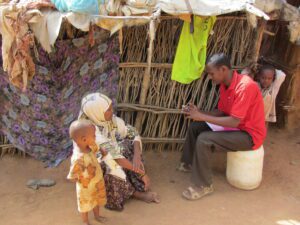Introduction
The Environmental Impact Assessment (EIA) assessment is a lifeline for Uganda’s quest to harmonize development with nature. Imagine a symphony where every note is in perfect harmony. This is what a well-conducted EIA assessment seeks to achieve—a balance between human ambition and the whispers of the wilderness. Let us delve into the heart of Uganda’s EIA assessment process, exploring its essence, legal frameworks, challenges, and its profound impact on sustainable development.
Understanding Environmental Impact Assessment
Definition of EIA Assessment
The EIA is a meticulous process, a dance of science and policy, designed to foresee and mitigate the environmental impacts of proposed projects. It serves as a guardian, ensuring that development does not trample upon the fragile ecosystems that cradle our existence.
Key Objectives of EIA Assessment
- To foresee potential environmental calamities before they materialize
- To weave environmental considerations into the very fabric of project planning and decision-making
- To champion sustainable development by advocating for projects that honor both human needs and ecological integrity
Legal Framework for EIA Assessment in Uganda
National Environment Act, 2019
The soul of Uganda’s EIA assessment lies within the National Environment Act of 2019. This act is a testament to Uganda’s commitment to environmental stewardship, mandating that all significant development endeavors undergo a rigorous EIA before approval.
Regulations and Guidelines
Complementing the Act are the Environmental Impact Assessment Regulations, 1998, and various guidelines. These documents are the compass guiding the EIA assessment process, ensuring it is thorough, consistent, and effective.
The EIA Assessment Process in Uganda
Screening
The EIA begins with screening, a critical step to determine whether a project demands a full EIA assessment. This decision hinges on the project’s scale, nature, and its potential to stir the environmental waters.
Scoping
Scoping, a cornerstone of the EIA assessment, identifies the key environmental issues and impacts. It is a collaborative effort, drawing on the voices of stakeholders and the public, ensuring all concerns are woven into the assessment.
Impact Assessment and Analysis
This stage is the heart of the EIA assessment, where detailed studies forecast the environmental repercussions of the proposed project. It is an intricate process, evaluating impacts on air, water, soil, biodiversity, and human health.
Mitigation Measures
Mitigation measures are the heroes of the EIA, proposed strategies to avert, reduce, or compensate for adverse environmental impacts. They are the shield and sword, protecting the environment from potential harm.
Public Participation
Public participation is the soul of the EIA assessment, infusing the process with transparency and inclusiveness. It invites the community to the table, valuing their insights and addressing their concerns about the project.
Reporting
The EIA culminates in a comprehensive report, detailing the project’s description, environmental baseline data, impact analysis, and proposed mitigation measures.
Review and Decision-Making
The EIA assessment report is scrutinized by the National Environment Management Authority (NEMA) and other relevant bodies. Their review determines the project’s fate—approval, modification, or rejection.
Monitoring and Compliance
Even after approval, the EIA journey continues with monitoring. It ensures that the project adheres to the proposed mitigation measures and remains compliant with environmental regulations.
Roles and Responsibilities
National Environment Management Authority (NEMA)
NEMA is the guardian of the EIA assessment process in Uganda. It ensures that assessments are conducted according to the highest standards and guidelines.
Project Developers
Project developers are the initiators of the EIA . They must engage qualified consultants to conduct the assessment and ensure compliance with all regulatory requirements.
Consultants
Consultants are the artisans of the EIA assessment, responsible for the technical aspects, including impact assessment, analysis, and report preparation.
Local Communities
Local communities are the heartbeats of the EIA process. Their participation ensures that the assessment is grounded in reality, addressing the concerns and aspirations of those most affected by the project.
Challenges in EIA Assessment Implementation
Limited Awareness and Understanding
A significant challenge is the limited awareness and understanding of the EIA process among stakeholders. This gap can impede effective implementation.
Financial Constraints
The cost of conducting a comprehensive EIA assessment can be prohibitive, particularly for smaller projects, limiting the scope and quality of the assessments.
Inadequate Technical Capacity
A shortage of skilled professionals and technical expertise can compromise the quality and reliability of EIA.
Political and Administrative Hurdles
Political interference and bureaucratic inefficiencies pose significant obstacles to the EIA assessment process, affecting its integrity and efficacy.
Case Studies of EIA in Uganda
Hydroelectric Projects
Hydroelectric projects, such as the Bujagali and Karuma dams, have undergone rigorous EIA. These assessments have highlighted the delicate balance between harnessing water resources and preserving ecosystems and community livelihoods.
Mining Activities
Mining projects, like the Kilembe Copper Mines, present significant environmental and social challenges. EIA assessments for these projects focus on issues such as water pollution, land degradation, and community displacement.
Agricultural Developments
Large-scale agricultural projects, including sugarcane and palm oil plantations, require thorough EIA assessments to evaluate their impacts on land use, biodiversity, and local communities.
Impact of EIA Assessment on Sustainable Development
Environmental Protection
The EIA serves as a guardian, protecting the environment by identifying potential risks and ensuring mitigation measures are in place. It promotes conservation and prevents environmental degradation.
Social Benefits
Public participation in the EIA assessment process ensures that local communities’ voices are heard. This inclusiveness leads to better social outcomes, such as improved living conditions and reduced conflicts.
Economic Considerations
By preventing environmental damage, the EIA contributes to long-term economic sustainability. It ensures that projects do not compromise the natural resources that are vital for Uganda’s economy.
Future of EIA Assessment in Uganda
Technological Advancements
Technological advancements, such as Geographic Information Systems (GIS) and remote sensing, can enhance the EIA process. These tools provide better data and analytical capabilities, making assessments more accurate and efficient.
Policy Improvements
Ongoing policy reforms can strengthen the EIA process. Clearer guidelines, streamlined procedures, and stricter enforcement can improve compliance and effectiveness.
Capacity Building Initiatives
Investing in capacity building is essential to address the technical and knowledge gaps in the EIA assessment process. Training programs and educational initiatives can equip stakeholders with the necessary skills and expertise.
Conclusion
The EIA assessment is a vital tool for promoting sustainable development in Uganda. By anticipating and mitigating environmental risks, it ensures that development projects are environmentally sound and socially acceptable. For Uganda to achieve its development goals while preserving its natural heritage, it is crucial for all stakeholders to actively engage in and support the EIA assessment process.
For further insights into environmental impact assessments in Uganda, you can explore Environmental Impact Assessment in Uganda.
FAQs
What is the purpose of an EIA?
The purpose of an EIA assessment is to evaluate the potential environmental impacts of proposed projects and to ensure that these impacts are considered in the planning and decision-making process.
How long does the EIA process take in Uganda?
The duration of the EIA assessment process in Uganda can vary depending on the complexity of the project. Typically, it can take anywhere from a few months to over a year.
What are the penalties for non-compliance with EIA assessment regulations?
Penalties for non-compliance with EIA regulations in Uganda can include fines, suspension of project activities, and legal action against the project developers. More details can be found on Uganda’s Environmental Impact Assessment Guidelines.
How does public participation influence the EIA assessment process?
Public participation ensures transparency and inclusiveness in the EIA process. It allows stakeholders to express their concerns and contribute to the decision-making, leading to more informed and acceptable outcomes.
What improvements are needed in the EIA assessment process in Uganda?
Improvements needed in the EIA process in Uganda include increased awareness and understanding, better financial and technical resources, and stronger enforcement of regulations.






